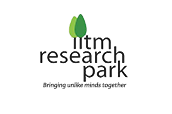As aptly put in the mission statement of India’s 1st university lead research park:
A community of seekers, scientists, and innovators working to change the world as we know it today.
A “Build Club” for India
Over 8 colleges attended this innovation exhibition, setting the foundation of “building a creative and technically strong India”
The talks by Professor Kamakoti (Director of IIT Madras) & Dr. Kumar Vembu (Founder of GoFrugal Technologies Ltd.) highlighted the creation of a lifestyle of constant learning and building a legacy for others to follow.

💭 The event was a message to students to hold conviction in their thoughts and ideas, untethered by the challenges of the unknown
The Demo Day
Despite the setbacks due to the pandemic, the various project teams at the Center for Innovation, IIT Madras, have continued to deliver on ambitious goals for innovation breakthroughs – be it Raftar Formula Racing’s transition to building an electric powertrain or Avishkar Hyperloop’s recent partnership with Railway Ministry of India for disrupting the transportation sector with a new mode of rapid travel. The Build Club featured some of CFI’s most interesting projects.
Avishkar Hyperloop & the promise of a >1200kmph travel
Hyperloop is now emerging as the fourth mode of transportation after land, air and water. A capsule-like vehicle (Pod) is accelerated in evacuated low-pressure tubes to avoid air drag and friction, resulting in extremely high speeds of upwards of 1200 kmph.
After receiving approval for an INR 8.34 crore funding from the Railway Ministry of India, the team is currently working on building the world’s largest student-run hyperloop testing facility which will be 500 meters long.
R&D: Developing technology for commercialization
For years, R&D institutions have largely pursued research and development to publish papers. The publication of papers was the key aspect. It is only in recent years that the focus has shifted. Research and development should result in commercialization so that the products we use in India are actually the ones that we develop in India, and that is a direction that we are working on.
IIT Madras Research Park is focused in that direction. It’s a lot of hard work. I think it’s not something that you can replicate overnight. You really need to understand that R&D for commercialization has not happened in the country since independence.
Only in the last 12 to 15 years have we been moving in that direction. Of course, we are the first ones to do it. There are many others who will do it because they are capable people, but it takes time, and we are helping other institutions to move in this direction, and hopefully we will accelerate the whole move. That is what will make India stand up.
Abhiyaan’s goal of an autonomous future
This team works on intelligent automation technologies in navigation, sample collection & other manual operations. Primarily working on 2 projects – Macro and Bolt.
Macro is a core sampling rover research project in its final design stage. It is a one-of-a-kind robot with the ability to automatically collect samples from greater depths through the use of a robust drilling mechanism. Bolt is a self-driving shuttle. The team has completed the software integration test and is on the way to procuring it as a 6-seater vehicle and enabling it as a service in IITM.
The inventions have been well received at esteemed international competitions such as the IGVC (Oakland University, USA) and Indy Autonomous challenge.
Anveshak and exploring Mars
The team is developing a Mars rover with systems to chart and study Martian surfaces by studying rock samples & building software & hardware for the rover to study & communicate discoveries on a given terrain. Currently ranked at 8 out of 100+ teams, in the URC, in their domain, the new rover, codenamed “Foresight” will be competing this July 2022 at the Anatolian Rover Challenge
Raftar Formula Racing’s electric speed demon
Little needs to be said about the 10-year-old, formula one racing team – the only 3 time champion of Formula Bharat; its legacy & heritage engraved with – “Blood, Sweat & Gasoline”.
Team Raftar announced its transition towards building & testing an electric racecar, back in 2020 & productively researched & simulated designs for the same during the pandemic This need for accommodation of a large battery pack in place of a combustion engine has challenged the team to rethink their designs.
They have come up with several innovative solutions including a new transmission system, defensive aerodynamics, stable suspension and regenerative braking.
These, coupled with a few more tricks, ensure the beast flies seamlessly past at 15k RPM, zooming into the future, leaving behind the definition of impossible, as a mere skidmark on the tarmac.
Surveillance & repair by gliders in the Sky
Aero club, the pioneer of the Agricopter, has now taken up the challenge of maintenance of wind turbines – remotely inspecting them for cracks, faults & performance monitoring, instead of risking human lives for manual inspection
Their upcoming quadcopter is a LiDAR powered drone has a glider, 3 cameras, drone flight & speed controllers and an exhaustive set of sensors to capture various metrics such as the distance of the drone from the wind turbine, RPM of the wind turbine and other essential measurements.
The team is currently working alongside 3 industry players on the object avoidance and image detection algorithm, so that if the drone encounters any obstacles around the turbine, it can easily identify and dodge it.
A Technology Center for everything
💡
“Everything around you, that you call life, was made up by people who were no smarter than you. And you can change it, you can influence it, you can build your own things that other people can use.”
~Steve Jobs (Founder, Apple)
Incubators & Development Centers
The research park is home to multiple incubators and development centers targeted at nurturing upcoming technologies
The Bio-Incubator is a programme for students to productize & commercialize breakthroughs in the bio-space. The lab is sufficed with facilities like molecular biology, microbiology, mammalian cell cultures, analytics, bio processes etc. They are also running Early Translation Accelerator (ETA) and workshops.
The Center for Battery has been working since 2017 with their own standard, which is authorized by the government of India. Fast charging , swap stations , DC fast chargers, battery management system, battery swapping- lie amidst the broad spectrum of products being developed & tested here.
The Center for Excellence focus on components of electric vehicle such as batteries, motors and chargers. The mechanical modules, thermal and electrical and electronics site and battery management system are all made in-house They’ve tied up with multiple technology partners such as Tata motors, BPCL. Pilot projects are developed by young innovators mentored & backed by the faculties.
Demonstrations & Projects
Accomplished veterans from several domains had congregated to teach & make students build products with the next wave of technologies. Some of them included:
Developing Rolling Display by building and porting an IDE software on an Embedded Processor Board
Building an autonomous navigation robot that finds a path through a maze
Building IoT systems through smart water monitoring (using a water flow meter), smart energy meter, Vehicle detection using RFID (Radio Frequency Identification Detector)
The RFID reader is a network connected device that can be portable or permanently attached. It uses radio waves to transmit signals that activate the tag. Once activated, the tag sends a wave back to the antenna, where it is translated into data. The transmitter is in the RFID tag itself.
Building a mobile app to enable payments using the Flutter framework
The Future of the Build Club
The director promised to conduct a townhall for students of IIT Madras every 6 months to share technological advancements and inculcate the will to innovate – all with the final goal of building a creative and technically strong India.
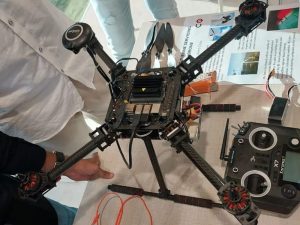
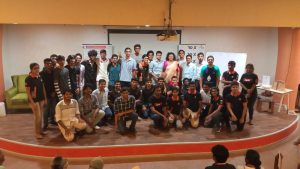
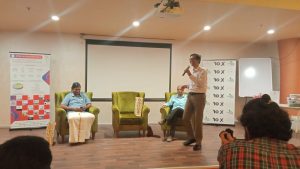
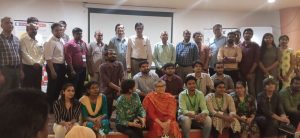
Credits:
Author: Technical Society, IIT Madras
August 22th, 2022
